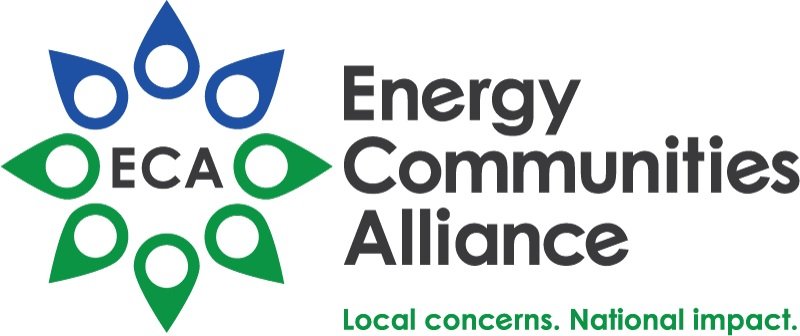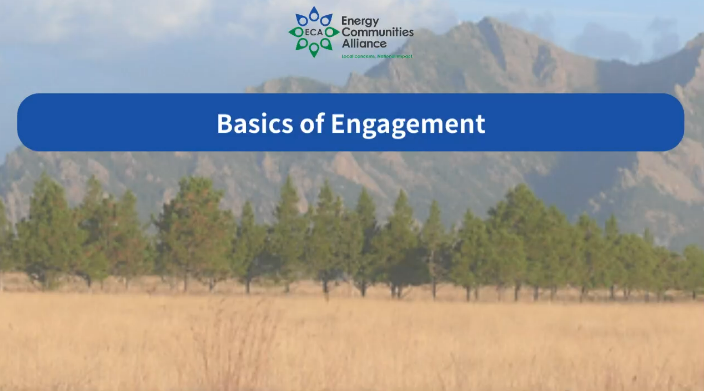ENGAGEMENT
Community engagement is often multi-faceted and difficult. There is no single guide or roadmap that will guarantee success, for what works in one community might not work in another. How local communities should be engaged in New Mexico, for example, may differ from how they should be engaged in Ohio and Kentucky.
For the federal government, a central goal of any community engagement must be to provide information and assist the community to develop an understanding of the technical issues coupled with clear options for remediating the site. Building trust at the outset is critical and often starts with the development of priorities. The local government, tribal and community values need to be understood to bridge what is technically achievable with what is politically feasible. Each issue or action will not necessarily gain political support before a decision is rendered, but keeping this view in mind is critical to the ultimate success of the cleanup.
AT A GLANCE
Click to expand
FREQUENTLY ASKED QUESTIONS
-
What are the cleanup priorities at the site?
What reports exist, if any, that characterize the contaminants at the site?
What are the impacts of the contaminants, for example, to the soil, groundwater, and air?
What is the risk profile to human health and the environment in the community?
What data does the federal agency have on the site?
What is the current estimated cost and time to remediate the site, and what is the annual site budget?
What is the level of cleanup currently planned for the site and what will remain at the site, if anything, after the cleanup is complete?
Where will the waste be disposed upon remediation (e.g., will it be left in place, moved to an on-site landfill, shipped off-site to a landfill, stored on or off-site)?
Under what law is the site being cleaned up (RCRA or CERCLA), and who are the state and federal contacts at the lead agencies?
How can we as the local community help DOE to be successful in the cleanup?
-
Although DOE ultimately selects the remedy for cleanup at a site, they get a lot of external input both formally by the State regulators and Congress (through the budget process) as well as from the local government, tribal government, community, citizens groups and others.
Local elected officials should establish and prioritize a relationship with the DOE site manager for the EM program. The manager is a good person to reach out to understand the cleanup program goals and issues at a site. The site manager is the DOE decision-maker at the site. It is also important to know EM leadership in Washington, DC and understand that EM decision-making is delegated through DOE leadership including the Under-Secretary at DOE responsible for EM, the Deputy Secretary and the Secretary of Energy.
Further, the site manager for a site may be from a different DOE program office (for example, the Office of Nuclear Energy operates the Idaho National Laboratory, the National Nuclear Security Administration operates Los Alamos, and the Office of Science operates Oak Ridge). In such instances, EM typically has a separate manager responsible for the cleanup program.
Finally, it is helpful to build relationships with the contractor at the site as they are performing the work. ECA developed site profiles to identify key people—from DOE field office managers and contractors—to contact at a site here. -
Components of successful community engagement efforts include:
Details: Universally, the details are important. However, which details are important varies from community to community. For one community, it might be water quality data; for another it might be job composition.
Clarity: DOE and the regulatory agencies must clearly define the nature of the decision to be made and why they are making the particular decision. That understanding must be communicated to the community. Clarity is especially important where a disagreement exists between the parties.
Accountability: DOE and the regulatory agencies must define who will make the decision, the nature of the decision, and the timeline for making the decision. Accountability must be clear to the community affected by the cleanup for it to be accepted and trusted.
Politics: Many environmental cleanup decisions are clear to all parties, and some sites are even remediated to a level that allows for unrestricted use. However, many of the large and expensive cleanup projects are multigenerational, are not clear-cut, and require discussion and negotiation—a political process. Although most people consider cleanup as only a technical process, environmental cleanups are, at the core, political discussions. Political decisions require iterative discussion and understanding of the issues. Learn more in ECA’s report, Politics of Cleanup.
-
Much like DOE is encouraged to be transparent and engage local governments, the local governments themselves should engage and educate their constituents on cleanup issues. As the local representatives on the ground who know the communities, mayors, city and county councilors, and other officials can communicate the benefits of the EM cleanup mission in the region. In doing so, local officials can build trust and support for cleanup missions on a grassroots level by communicating the health and safety protections, potential for jobs, and economic development opportunities during and following the cleanup.



